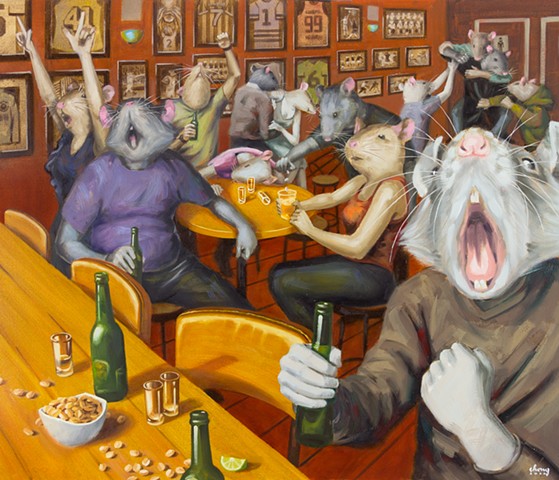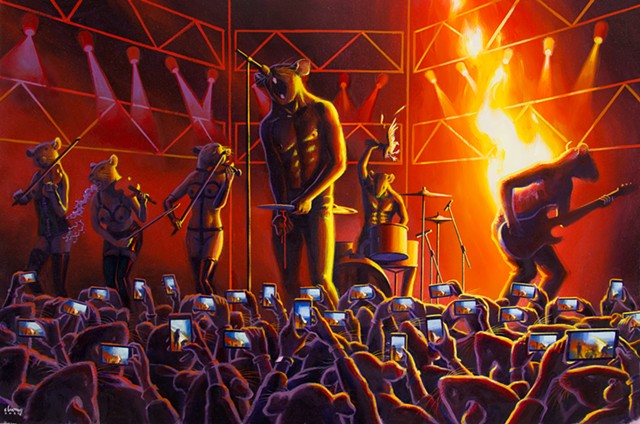"THE PLAGUE"
During the COVID-19 lockdowns of 2020, people across the globe yearned for “third places”—spaces between home (the “first” place) and work (the “second” place) where individuals connect, exchange ideas, and build community. Parks, gyms, cafes, salons, and fast-food restaurants all serve this role.
Over a century ago, similar spaces inspired painters during Europe’s Post-Industrial Revolution. The transformation of Paris in the late 19th century helped spark the Impressionist movement. Artists like Monet and Renoir depicted the social shifts and prosperity of the time through scenes of public life in boulevards, parks, cafés, and theaters.
In this body of work, I reimagine both well-known and obscure Impressionist compositions to reflect on modern third spaces. Rather than adopting the fleeting brushwork of Monet or Seurat, I use a layered, detailed style reminiscent of children’s book illustrations. But instead of charming animals, my scenes are populated by rats.
Rats have long symbolized disease and decay—from their association with the Black Death to the spread of illness during colonization. In Camus’s novel The Plague, rats are the first to die, signaling the spread of a deadly epidemic. As in fiction, pandemics in reality strike indiscriminately. At its core, human existence is precarious, resting on what Camus called “the absurd.”
My paintings reflect this absurdity by showing rat-people engaging in everyday public life while acting in ways that undermine the communal purpose of third spaces. After the trauma of COVID-19, it would seem logical for people to return with renewed awareness of life’s fragility and interconnectedness. Yet, human nature resists change. We repeat mistakes, isolate ourselves, and act entitled. In this light, we become the plague—destroying our environment and each other.













